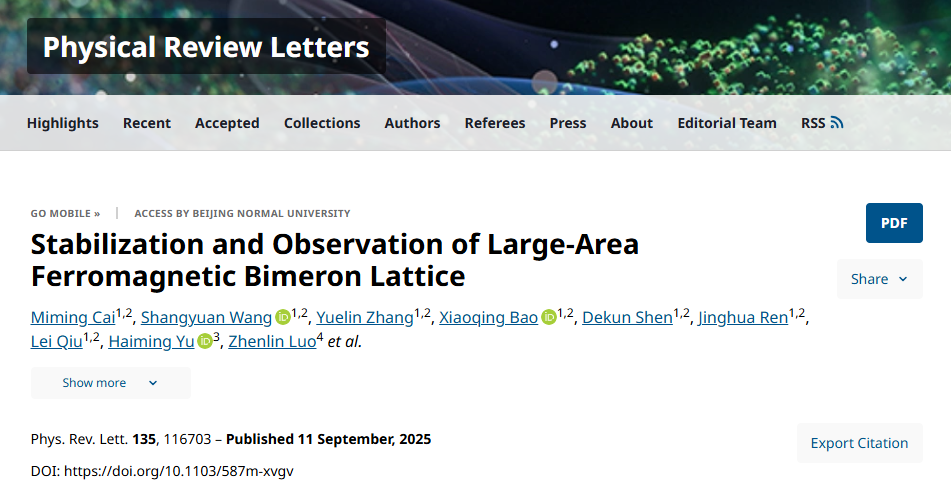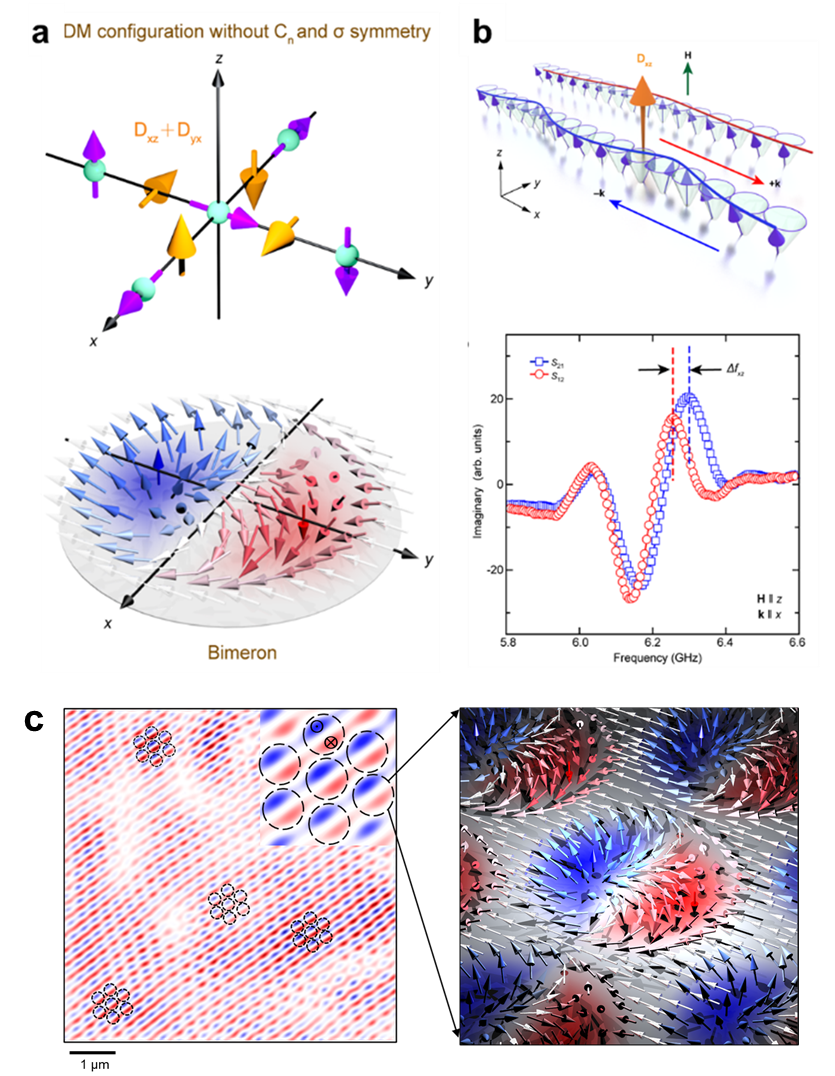Professors Zhang Jinxing and Shen Ka From the School of Physics and Astronomy Published a Paper in Physical Review Letters
Recently, the teams of Professor Zhang Jinxing and Professor Shen Ka from the School of Physics and Astronomy published a paper titled "Stabilization and Observation of Large-Area Ferromagnetic Bimeron Lattice" in Physical Review Letters. The paper's results demonstrate that artificially designed symmetry of DM vectors and its associated topological variants can be extended to a wide range of materials. The large-area bimeron phase observed in this strongly correlated oxide provides a novel platform for exploring emergent functionalities and quantum phenomena in both ground and excited states.


The abstract of the paper is as follows:
Symmetry engineering is an effective approach for generating emergent phases and quantum phenomena. In magnetic systems, the Dzyaloshinskii-Moriya (DM) interaction is essential for stabilizing chiral spin textures. The symmetry manipulation of DM vectors, described in three dimensions, could provide a strategy toward creating abundant topologically magnetic phases. Here, we have achieved breaking the rotational and mirror symmetries of the three-dimensional DM vectors in a strongly correlated ferromagnet, which were directly measured through the nonreciprocal spin-wave propagations in both in-plane and out-of-plane magnetic field geometries. Combining cryogenic magnetic force microscopy and micromagnetic simulations, we discover a bimeron phase that emerges between the spin spiral and skyrmion phases under an applied magnetic field. Such an artificially manipulated DM interaction is shown to play a critical role in the formation and evolution of the large-area bimeron lattice, a phenomenon that could be realized across a broad range of materials. Our findings demonstrate that symmetry engineering of the DM vectors can be practically achieved through epitaxial strain, paving the way for the creation of diverse spin topologies and the exploration of their emergent functionalities.
Reference: https://journals.aps.org/prl/abstract/10.1103/587m-xvgv


